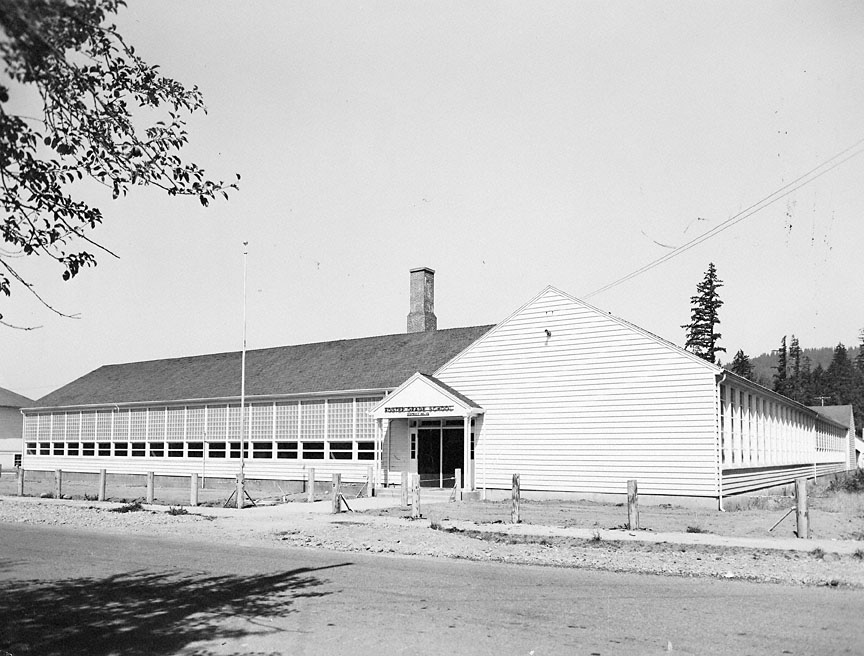- Catalog No. —
- OrHi 105405
- Date —
- 1949
- Era —
- 1921-1949 (Great Depression and World War II)
- Themes —
- Education, Geography and Places
- Credits —
- Oregon Historical Society
- Regions —
- Willamette Basin
- Author —
- Freeman, Hayslip & Tufts, architects
Foster Grade School, 1949
The new addition to the grade school in the Linn County town of Foster is shown in this 1949 photograph.
Timber stands on the South and Middle Santiam rivers were first accessed in the 1930s, and the timber industry in the vicinity of Sweet Home and Lebanon boomed during the World War II years. Sweet Home was a village of 189 people in 1930; in 1940, there were 1,090, and by 1950, 3,603 residents. Five miles east of Sweet Home community of Foster, founded in 1892, also experienced growth. The first unit of a new grade school was built in 1946, with an addition completed in 1949.
The school building is a single-story wood frame structure with clean lines and walls of windows. The entry with its skeletal pillars and unadorned pediment provides the only decorative note on this modest International style building. The school conforms to mid-century standards that insure plenty of light and ventilation in school classrooms, and a single-floor plan that minimizes steps and stairwells. The Foster school is utilitarian and dignified, but unlike many public school buildings a half-century earlier, it does not seek to be a statement of civic pride.
The community of Foster disappeared in the 1960s with the construction of Green Peter Dam on the Middle Santiam River, and the Foster Dam just downstream. The dams were built by the Army Corps of Engineers as part of the multi-purpose Willamette Valley Project that regulates stream flow, generates hydroelectric power, and provides boating and fishing opportunities on the reservoirs behind the dams. Timber in the Santiam watershed is substantially depleted, and Sweet Home’s population declined in the 1980s as the timber industry shrank. Sweet Home and the community of Foster, relocated above the reservoir in 1968, have promoted the area for recreation and retirement living.
Written by Richard Engeman, © Oregon Historical Society, 2005.
